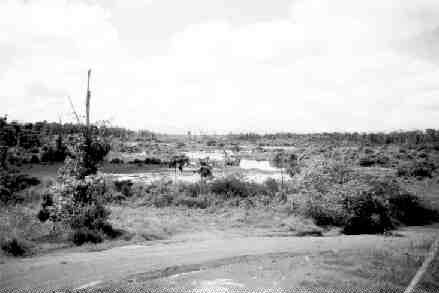Vancouver — Two rulings by Venezuela’s mines ministry have laid the groundwork for what could become a bidding war over control of the legally plagued Las Cristinas gold property in Bolivar state.
The resolutions give the government control over the property, dealing a blow to
The rulings, announced by Mines Minister Alvaro Silva, state that the government is reacquiring full rights to the gold and copper property. The rulings mark a setback to attempts by Vannessa Ventures to assert its right to develop Las Cristinas. Just last year, the junior purchased a 95% stake in Minera Las Cristinas (Minca), the company that held the rights to the property, from
“The Republic resumes its full rights over the expired gold concessions Cristina 4, Cristina 5, Cristina 6 and Cristina 7,” states one of the ministry’s resolutions. “Mining activities will revert back to full ownership by the Republic.”
The second resolution annulled a copper concession for the same areas held by Minca. Vannessa considered this resolution a positive development, as it clears the way for the junior to deal with the Las Cristinas title issue outside of the contractual dispute.
The mines ministry cancelled the gold and copper rights to the Las Cristinas concessions previously held by the CVG as of March 8, 2002.
Minca acquired the copper rights through a title transfer from CVG. Minca is appealing the cancellation of the copper rights to the concessions. Vannessa also reaffirmed what it called Minca’s “sole legal right to the gold concession titles under current Venezuelan law.”
According to Vannessa, the 1999 Venezuelan mining law places Minca in priority position for the Las Cristinas gold concession titles. But CVG described this interpretation as “absolutely irrational,” saying the decision to return the Las Cristinas concession to the state had been agreed to by the state holding firm and the mines ministry.
Vannessa took over the project in July 2001 under a deal with Placer. Under the agreement, the major retains a 2% net smelter return royalty (NSR) on Vannessa’s portion of copper revenue from the project and a variable NSR on Vannessa’s share of gold revenue, which ranges from 1% (if gold is below US$276 per oz.) to 5% (at prices above US$350 per oz.).
Placer can back in if a bankable feasibility study shows that a 250,000-oz.-per-year gold mine can be profitable. The right can be exercised for Vannessa’s capital costs and “preproduction soft costs,” plus 10%. Vannessa would then be entitled to 2% of Placer Dome’s NSR on gold and copper production, provided it had spent at least US$2 million in capital costs on the project and maintained the mining rights for more than a year.
Placer had planned a US$600-million operation, producing 470,000 oz. gold and 16,000 tonnes copper annually, based on reserves of 323 million tonnes grading 1.1 grams gold per tonne with 0.14% copper. Placer halted development in 1999 when gold prices entered their prolonged slump.
Vannessa envisages a 100,000-oz.-per-year mine, much smaller than Placer had planned, to exploit near-surface mineralization. The junior estimates it would take US$35-50 million to put such a project into production.
The latest developments cast a heavy cloud over the Placer Dome agreement and create the conditions for the Las Cristinas property to be offered to new partners. Companies that have expressed interest in the project include U.S.-Based
Gold Reserve holds the nearby Brisas deposit, which has proven and probable reserves of 235 million tonnes grading 0.14% copper and 0.79 gram gold per tonne. At present, the Brisas project is stalled, owing to low grades and weak metal prices. Gold Reserve proposes a 55,000-tonne-per-day operation with estimated operating cash costs of US$162 per oz. gold (net of copper credits). Total costs are pegged at US$254 per oz. gold.
Crystallex is still claiming a right to a portion of the Las Cristinas property. In the early 1990s, the junior purchased a Venezuelan company, Inversora Mael, which claimed to hold the rights to the Las Cristinas concessions. A series of legal challenges to CVG’s title to the ground appeared to end in June 1998, when the Venezuelan Supreme Court refused to hear claims brought by Mael and Crystallex.
Despite the ruling, Crystallex continues to take legal action against the Venezuelan government to assert its claim to the property.


Be the first to comment on "Venezuela takes control of Las Cristinas (March 18, 2002)"